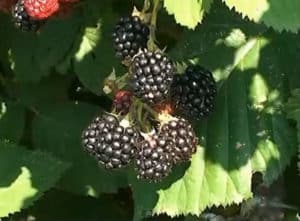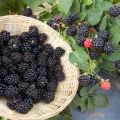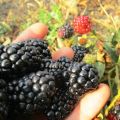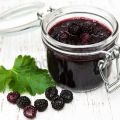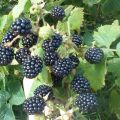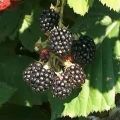Planting, growing and caring for blackberries in the Urals and Siberia, the best varieties
Wild blackberry has very long stems, covered with sparse thorns and a purine bloom of a bluish hue. In the first year, fruit buds form on the shoot, in the second, lateral branches with inflorescences appear. After the berries ripen, the stems dry out at the age of 2 years. The bush leaves are dried, brewed and drunk like tea. Ripe fruits of the plant are rich in organic acids, vitamins, pectin. Observing the requirements for planting and caring for blackberries in the Urals, you can count on a good harvest.
How to choose the right variety
After the cultivation of the wild perennial, in addition to the creeping plant variety, an erect blackberry was bred. But almost all varieties of dwarf shrubs do not withstand such frosts as raspberries, which belongs to the same genus Rubus. In Siberia, where the air temperature drops to -40 ° C, blackberries grow, but it is necessary to plant varieties adapted to the harsh climatic conditions and take into account that you still have to cover the bushes.
For the Urals, where strong winds blow, preference should be given to erect frost-resistant shrubs.
Blackberry varieties for Siberia
The culture of the genus Rubus in North America is grown on an industrial scale. In Russia, it is planted mainly by summer residents in the Leningrad region, and in the Moscow region, and in the Far East, and in the Crimea.
In Siberia, blackberries take root and bear fruit:
- Taylor;
- Agave;
- Loughton;
- Thornfree.
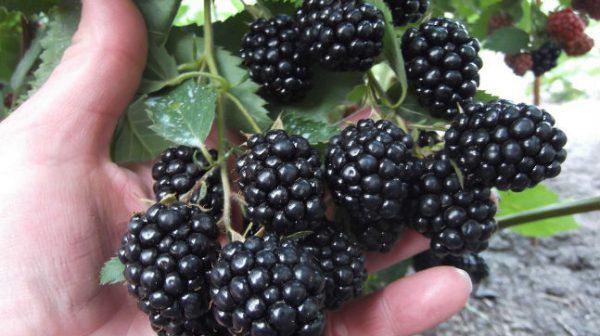
The varieties are valued for their large berries and decorative appearance. All of them withstand frost, but in a harsh climate they take refuge for the winter.
Early
In Siberia, it is recommended to plant blackberries, which ripen not in September, when it is already cold, but at the beginning of summer. The Eldorado variety takes root in regions with a harsh climate. Erect bushes have long shoots covered with large thorns. In early June, the Giant blackberry ripens. The fruit weighs only 7 g, but the plant gives a good harvest, is valued for its high winter hardiness.
One of the new early Black Bute hybrids is distinguished by large fruits, individual specimens weighing 20-23 grams. Agave oval blackberries are harvested in several stages. The bushes of this variety are of medium height, thick shoots falling down, dotted with brown thorns. The plant can withstand frosts down to -30 ° C.
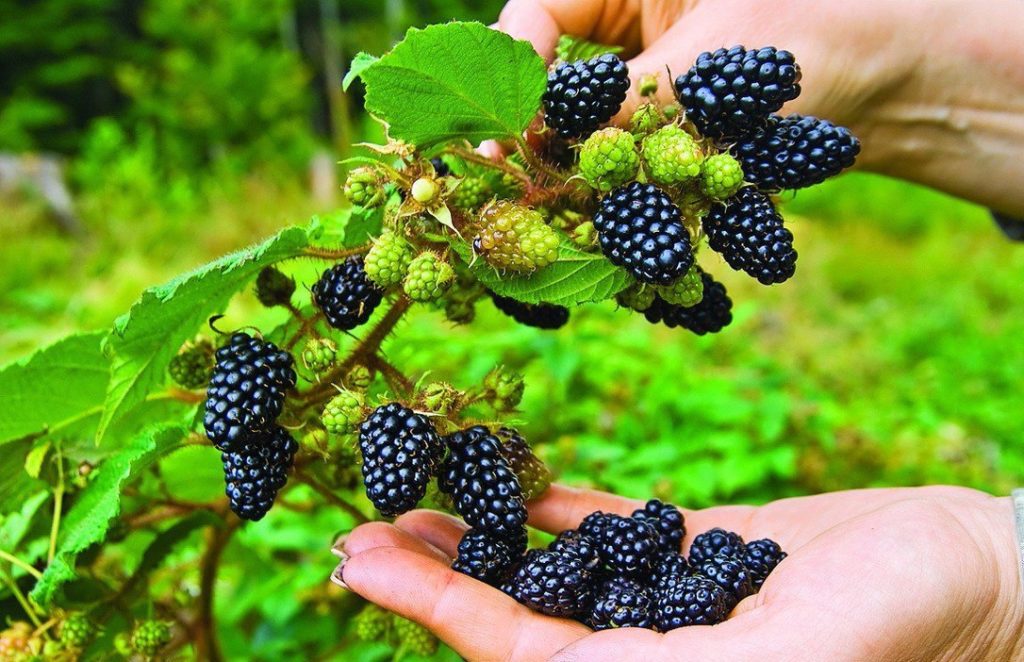
Medium ripening
In a temperate climate, the Tupi blackberry variety takes root. An upright bush with small thorns is rarely affected by diseases, it tolerates frosts under cover. The harvest ripens by early August. The weight of one berry reaches 9-10 grams. The Loughton variety is distinguished by amicable ripening; in a favorable year, a whole bucket of small blackberries is collected from the bush.
A plant with long branches does not suffer from diseases, but frosts at -20 ° C are only tolerated under cover.
Late ripening
In regions where the summer is short, varieties with early ripening are planted, but in southern Siberia, Texas blackberries bred by Michurin are grown. On the creeping bushes in August, fragrant sour berries ripen, weighing about 10 grams, which can be preserved and frozen.
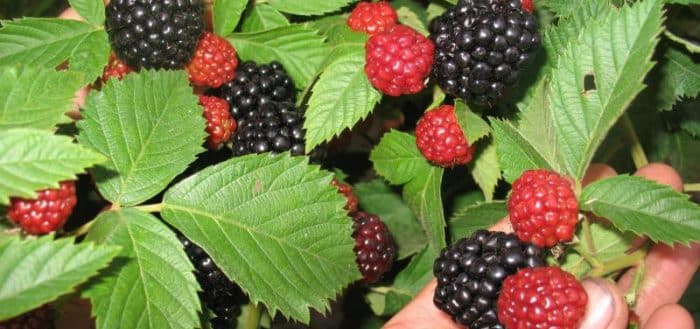
Blackberry blackberries must be covered for the winter. The harvest is harvested in the last month of summer and in September. On one branch of the plant, 15-17 small fruits are tied.
Shade tolerant
Blackberries take root in different conditions, but the taste of the berries deteriorates when there is a lack of light, during damp and rainy weather. The shrub adores the sun, but some varieties feel fine in the shade. These include Agaves, their virtues are called:
- exceptional frost resistance;
- high productivity;
- good berry taste.
Thornless Evergreen variety grows in the shade. There are no thorns on the shoots of the plant. More than 60 small fruits are tied on one hand.

Frost resistant
Darrow's blackberry adapts well to the cold winters of Siberia. An upright bush covered with thorns does not die at a temperature of -35 ° C.
They have high frost resistance:
- El Dorado;
- Agave;
- Snyder.
American hybrid Thornfrey pleases with large berries. A powerful plant with long shoots does not suffer from diseases, tolerates cold winters normally, but under cover.
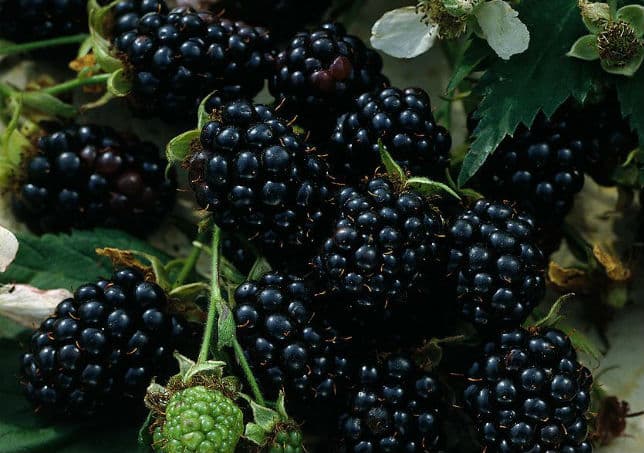
Repaired
To increase the yield of blackberries, the bushes are thinned out, leaving no more than 5 branches. In Siberia, where cold autumn quickly comes, among the remontant varieties of plants strewn with fruits, only a few take root - Black Magic and Ruben with large berries and good winter hardiness, as well as Prime Yan, adapted to adverse conditions.
The best varieties for the Urals
In regions where there are few sunny days with high temperatures, blackberries are planted, which can withstand severe frosts, and have time to ripen before the cold weather. In the Urals, erect varieties of semi-shrub that are less affected by the wind take root better - Black Satin, Kiova, Valdo.

Early
In a harsh climate, the Eldorado blackberry feels fine, which is not only distinguished by its high winter hardiness, but also pleases with berries of a pleasant taste that ripen in early summer.Snyder variety is not affected by fungi, grows on any soil. Shoots of an erect bush covered with large thorns do not freeze at low temperatures, small fruits ripen by the end of June.Polar tolerates spring drops, withstands frosts of -30 C, sweet blackberries are harvested in the first month of summer. One plant produces up to half a bucket of berries.
Mid-season
The fruits of the Gazda variety, created in Poland, manage to ripen in the Urals. The tall bushes of the hybrid tolerate severe cold, do not suffer from diseases. On shoots, poorly covered with thorns, blackberries ripen in early or mid-August, harvesting ends in September.
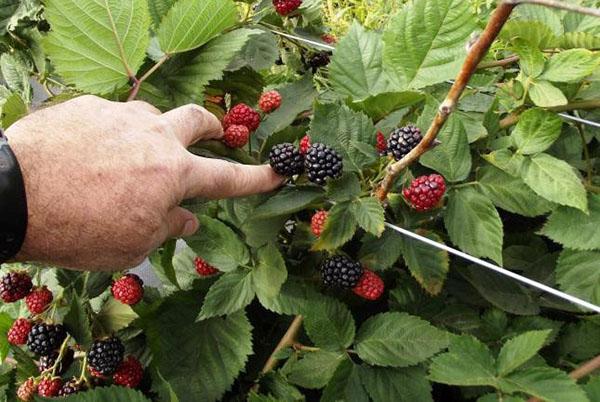
Loughton pleases with a high yield, the berries ripen by the end of summer.
Late
In the Urals, mainly blackberry hybrids are planted, the fruits of which ripen in July. Texas and Oregon Thornless endure low temperatures under cover. Both varieties delight with a large number of berries. A bucket of fruits are collected from one bush, which ripen by the end of August - beginning of September.
Winter hardy
Agavam endures the lowest temperatures. Almost does not lag behind this variety Gigant. Erect Darrow bushes do not freeze at -35 FROM.The winter-hardy hybrids of Thornfrey and Amara successfully withstand the Ural frosts.

Bush
Blackberries with erect shoots tolerate low temperatures and strong winds, but require shelter in northern latitudes. The stems of these plants are covered with thorns or thorns, reaching a height of 2 meters. In the Urals, bush varieties Ruben, Agavam, Gazda take root.
Creeping
In the forests of Europe, the Asian taiga, in the wild, you can find a dew-grass, the shoots of which spread along the ground, reaching 4–5 meters. Such blackberries bear fruit in the shade and are not afraid of drought. In the Urals, hybrids are cultivated in Oregon Thornless, Texas, but in winter they freeze out without shelter.
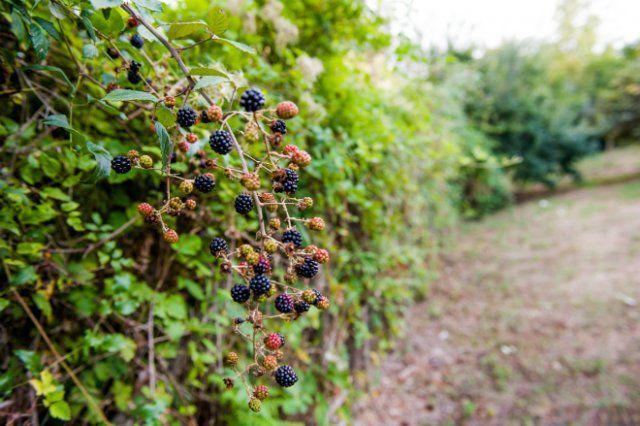
How to plant and grow a crop
It is not so easy to leave a blackberry in a harsh climate, but subject to the requirements of agricultural technology, careful care, it awards berries rich in useful components.
Timing suitable for planting
In Europe and America, where blackberries are cultivated on an industrial scale, there is not much difference when to send plant shoots to the ground - in spring or autumn, but it depends on this period whether the shrub will survive in a climate with cold winters and late frosts. To eliminate the risk of death of blackberries in the Urals and Siberia, they are planted in the first ten days of May or from September 1 to 15. In this case, the highest probability is that the plant will not only survive, but also be able to take root.
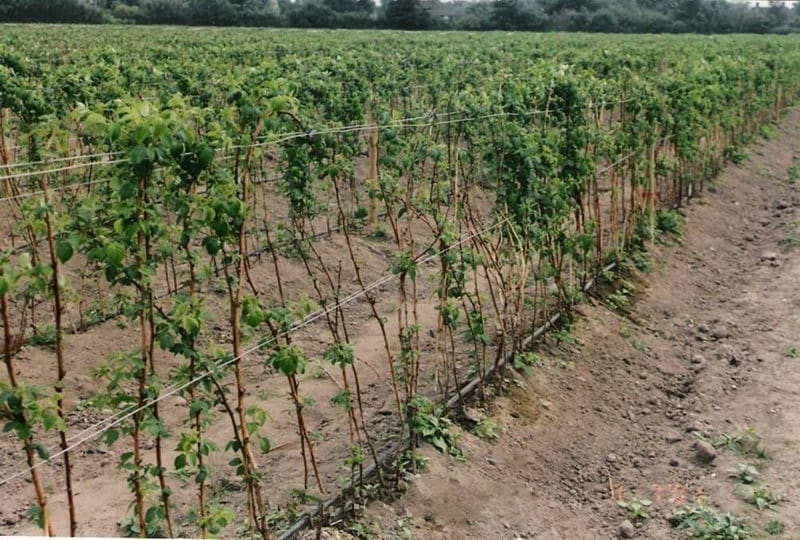
Where to plant on the site
The place for blackberries should be well lit by the sun, be inaccessible to northern winds. The semi-shrub feels comfortable at a distance of a meter along the hedge or fence from the west or south side.Blackberries need fertile soil, not rocks, salt marshes, or swamps. The culture dies when the roots reach the groundwater.
Pre-planting works
Having chosen a suitable place for the plant, the entire area is freed from weeds, the remains of the stems are removed, the soil is carefully dug up.

Site preparation
Since blackberries are demanding on soil fertility, before planting the land must be fertilized with organic matter and mineral complexes.
For 1 sq. m of area is contributed by:
- humus bucket;
- 2 tbsp. tablespoons of potassium sulfate;
- 100 g superphosphate.
10-15 days before planting blackberries, deep holes with a diameter of 40-50 cm are dug in several rows on the site, leaving a distance of 1.5 m between each.
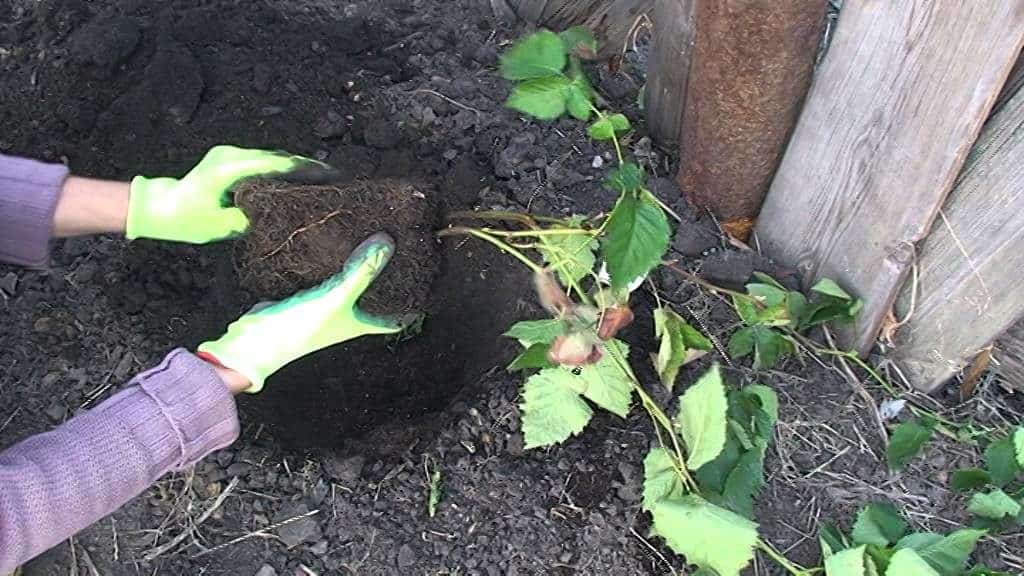
Preparation of planting material
The bushes of the culture, which are preferable to buy in the nursery, are soaked in water, where they must stay for at least half a day.
Procedure technology
The seedling is placed in the hole vertically, deepening the neck by 2 or 3 cm, the roots are laid on a mound made in the hole. After that, a groove is dug around the bush, half a bucket of water is poured, the ground near the plant is mulched with peat. The shoots are pruned, leaving branches up to 5 cm long.
Follow-up care
If you take care of the blackberry, even in a harsh climate, it rewards the first fruits. In order for the roots to be saturated with oxygen, you need to constantly loosen the soil throughout the entire area.
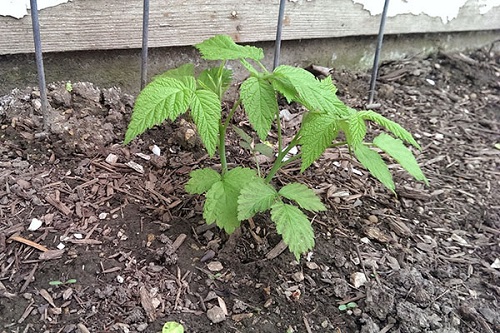
Irrigation
The first month or 2 after planting, the bushes need to be watered frequently. After the blackberries take root, the amount of moisture is reduced. But when the berries begin to ripen, 2 buckets of water are poured under each bush once a week.
Foliar and root fertilization
In spring, blackberries need nitrogen, it is found in urea. Every 2 years, a bucket of compost or humus is applied under the bushes, and the stems and leaves are sprayed with Bordeaux liquid.
Garter on supports
Blackberries have very long shoots, after planting and pruning, they are fixed to the trellis:
- fan;
- wave;
- rope.
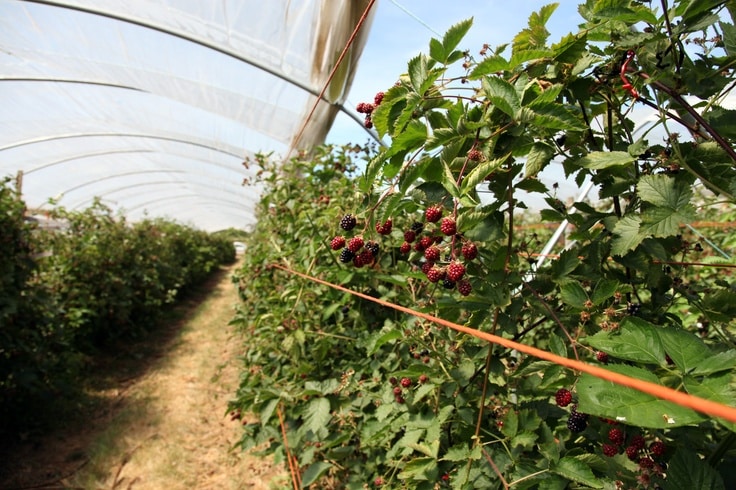
The shoots are attached to the wire in the center, and the fruiting shoots are directed sideways, weaved together in twos, or allowed to drag down. Tying to a support in any of these ways makes pruning easier and easier to pick berries.
Formation
If the shrub produces flowers in the first year, it is advisable to cut them off. The next spring, the branches are shortened by 15 centimeters. In the summer, fruiting shoots are cut off completely, and excess growth is removed.
Shelter for the winter
Even cold-resistant hybrid crop varieties in Siberia and the Urals often freeze out. To prevent this from happening, in the fall they dig a trench, where young branches are laid, covered with needles, sawdust. In the spring, before the buds appear, the plant is freed from the covering material.

